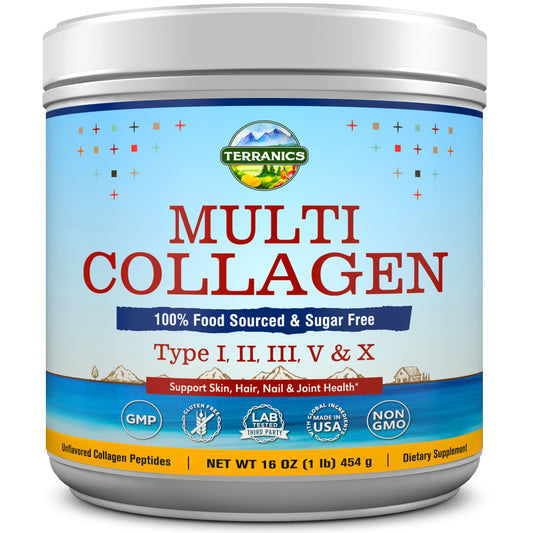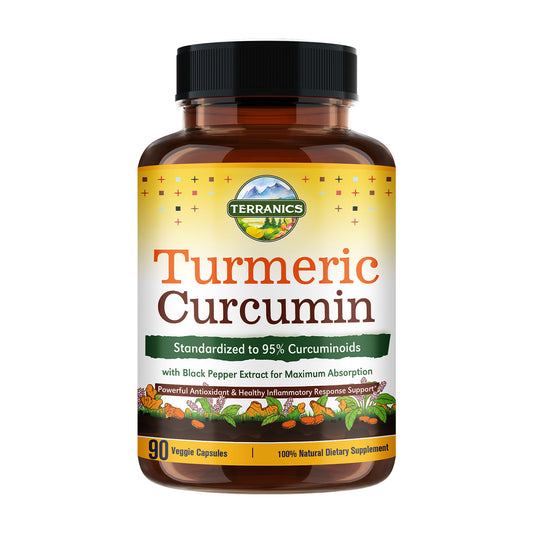
For many people, the mere mention of spicy foods conjures images of fiery tongues and streams of sweat. But beyond the heat and intensity lies a world of flavors and benefits that make spicy foods worth celebrating. Whether you're a fan of jalapeños, sriracha, or habaneros, incorporating spicy foods into your diet can bring a range of advantages for your taste buds and overall well-being. In this comprehensive guide, we will explore the reasons why you should get fired up about spicy foods and how they can add a zesty twist to your culinary adventures.
Exploring the World of Spices: A Journey of Flavors
The Fascinating World of Spices:
- Aromatic spices that tantalize the taste buds: Spices are known for their enticing aromas that can awaken the senses and enhance the overall dining experience. From the warm and earthy scent of cinnamon to the fragrant and floral notes of cardamom, each spice offers a unique and captivating aroma that adds depth to dishes.
- An array of flavors, from mild to intensely hot: Spices encompass a wide range of flavors, from subtle and mild to fiery and intensely hot. Whether you prefer the delicate warmth of cumin or the fiery kick of chili peppers, there is a spice to suit every palate and culinary preference.
- Spice blends and regional variations: Spices are often combined to create flavorful blends that are unique to different cuisines and regions. These blends can include a variety of spices, herbs, and other seasonings, resulting in complex and well-balanced flavors. Exploring these spice blends allows you to discover the distinct culinary traditions and tastes of different cultures.
The Heat Spectrum:
- Understanding the Scoville scale: The Scoville scale is a measurement used to quantify the spiciness or heat of chili peppers and other spicy foods. It provides a standardized way to compare the heat levels of different peppers and helps individuals gauge their tolerance for spicy flavors.
- Different levels of spiciness and their culinary applications: Spices come in varying degrees of spiciness, ranging from mild to extremely hot. Understanding the different levels of spiciness allows you to adjust the heat in your dishes according to personal preference and the desired flavor profile. Mild spices like paprika are ideal for adding subtle warmth, while hotter spices like cayenne pepper or ghost pepper can be used sparingly to provide a fiery kick.
- Experimenting with various pepper varieties: Peppers are a common source of spice in many cuisines. By experimenting with different pepper varieties such as jalapeno, habanero, or serrano, you can explore a wide range of flavors and heat levels. Each pepper adds its own unique character to a dish, allowing you to create diverse and exciting culinary experiences.
Elevating Your Culinary Adventures:
- Adding depth and complexity to dishes: Spices are essential for adding depth, complexity, and layers of flavor to your dishes. They can transform a simple dish into a culinary masterpiece by enhancing the taste profiles and creating a more well-rounded and satisfying eating experience.
- Enhancing flavors in both savory and sweet recipes: Spices are not limited to savory dishes alone. They also play a crucial role in enhancing the flavors of sweet recipes. From cinnamon and nutmeg in baked goods to cardamom and saffron in desserts, spices add a delightful and aromatic touch to sweet treats.
- Exploring different cuisines that prominently feature spice: Spices are a key component of many cuisines around the world. Exploring different culinary traditions that prominently feature spice, such as Indian, Thai, Mexican, or Moroccan cuisine, allows you to broaden your culinary horizons and discover new and exciting flavor combinations.
The Health Benefits of Spicy Foods: More Than Just Heat
Boosting Metabolism and Calorie Burning:

Spicy foods have been found to temporarily increase metabolism and promote calorie burning. Certain compounds found in spicy ingredients, such as capsaicin, can raise body temperature and stimulate the metabolic rate. This can potentially aid in weight management and support overall metabolic health.
Natural Pain Relief and Anti-Inflammatory Properties:

Spices like chili peppers contain capsaicin, which has been shown to have natural pain-relieving properties. Capsaicin can help alleviate pain by blocking pain signals and reducing inflammation. It is also commonly used in topical creams and patches for pain relief.
Sinus Clearance and Respiratory Benefits:

Spicy foods like horseradish, wasabi, and chili peppers can help clear congested sinuses and provide relief from nasal congestion. The heat from these spices can stimulate mucus flow and open up airways, making it easier to breathe. Additionally, the antibacterial properties of certain spices may help fight respiratory infections.
Mood Enhancement and Endorphin Release:

Consuming spicy foods can trigger the release of endorphins, which are natural feel-good chemicals in the brain. This can result in an enhanced mood and a sense of well-being. The heat from spicy foods can also stimulate nerve receptors, leading to a pleasurable and invigorating sensation.
Exploring Spices with Potential Health Benefits
Turmeric: The Golden Spice:

Turmeric is a vibrant yellow spice commonly used in Indian and Southeast Asian cuisines. It contains a compound called curcumin, which is known for its potent anti-inflammatory and antioxidant properties. Curcumin has been studied for its potential benefits in reducing chronic inflammation, supporting joint health, and improving cognitive function. It may also have antimicrobial properties and has shown promise in supporting liver health. Turmeric can be used in various dishes, including curries, stir-fries, and golden milk beverages.
Ginger: A Versatile Spice with Numerous Benefits:

Ginger is a versatile spice widely used in both culinary and traditional medicine practices. It has a unique spicy and slightly sweet flavor that adds warmth to dishes. Ginger contains bioactive compounds, including gingerol, which has anti-inflammatory and antioxidant properties. It has been used traditionally to ease digestive discomfort, reduce nausea and vomiting, and alleviate muscle soreness. Ginger may also have potential benefits for managing blood sugar levels, supporting cardiovascular health, and boosting the immune system. It can be used in both savory and sweet recipes, such as stir-fries, teas, and baked goods.
Cayenne Pepper: Heat with a Health Kick:

Cayenne pepper is a fiery spice derived from dried chili peppers. It contains an active compound called capsaicin, which gives it its characteristic heat. Capsaicin has been studied for its potential health benefits, including boosting metabolism, promoting weight loss, and reducing appetite. It may also have pain-relieving properties when applied topically and has been used in creams and ointments for conditions like arthritis and muscle pain. Moreover, cayenne pepper has antimicrobial properties and can support healthy digestion. It can be added to various dishes, such as chili, soups, and marinades, to add a spicy kick.
Spicy Foods and Culinary Creativity: Recipes and Ideas
Appetizers and Snacks:
Spicy Buffalo Cauliflower Bites: Toss cauliflower florets in a mixture of hot sauce, melted butter, and spices, then bake until crispy. Serve with a cooling dip like ranch or blue cheese dressing.
Sriracha Deviled Eggs: Add a kick to classic deviled eggs by mixing Sriracha sauce into the egg yolk filling. Garnish with chopped chives or a sprinkle of paprika.
Spicy Guacamole: Mash ripe avocados with diced jalapenos, red onions, lime juice, and chopped cilantro. Adjust the heat by adding more or less jalapeno depending on your preference. Serve with tortilla chips or as a topping for tacos.
Main Courses:
Spicy Thai Basil Chicken: Stir-fry sliced chicken breast with Thai basil leaves, minced garlic, chili peppers, and soy sauce. Serve over steamed rice for a quick and flavorful meal.
Chipotle Lime Shrimp Tacos: Marinate shrimp in a mixture of chipotle peppers in adobo sauce, lime juice, and spices. Grill or sauté the shrimp until cooked, then serve in warm tortillas with your favorite taco toppings.
Spicy Szechuan Noodles: Toss cooked noodles with a spicy Szechuan sauce made from soy sauce, vinegar, sesame oil, garlic, ginger, and chili oil. Add sautéed vegetables, such as bell peppers and snap peas, for a satisfying vegetarian option.
Side Dishes and Condiments:
Spicy Roasted Brussels Sprouts: Toss halved Brussels sprouts with olive oil, red pepper flakes, garlic powder, and salt. Roast in the oven until crispy and caramelized. Serve as a flavorful side dish or add to salads.
Jalapeno Cornbread: Add diced jalapenos and shredded cheddar cheese to your favorite cornbread recipe for a spicy twist. Bake until golden brown and serve alongside chili or soups.
Spicy Mango Salsa: Combine diced mango, red onion, jalapeno, lime juice, and chopped cilantro in a bowl. Season with salt and a pinch of cayenne pepper for an extra kick. Serve with tortilla chips or as a topping for grilled meats or fish.
Incorporating Spicy Foods into Your Lifestyle
Gradual Heat Exploration:
When incorporating spicy foods into your lifestyle, it's important to start gradually if you're not accustomed to high levels of spiciness. Begin with milder spices and gradually increase the heat as you become more comfortable. This allows your taste buds to adjust and appreciate the flavors without overwhelming your palate. Over time, you can explore spicier ingredients and experiment with different spice levels to find your preferred heat intensity.
Balancing Heat and Flavor:
While heat is a defining characteristic of spicy foods, it's essential to strike a balance between heat and flavor. Spices should enhance the overall taste of a dish rather than overpower it. Consider combining spices with complementary flavors to create a harmonious blend. For example, balancing the heat of chili peppers with the sweetness of coconut milk or the tanginess of citrus can create a well-rounded flavor profile.
Growing and Harvesting Your Own Spices:
For an immersive experience, you can try growing and harvesting your own spices. Many spices, such as basil, thyme, and chili peppers, can be grown in pots or small gardens, even in limited spaces. By growing your own spices, you have access to fresh, flavorful ingredients and the satisfaction of nurturing plants from seed to harvest. Additionally, it provides an opportunity to learn about the cultivation process and deepen your understanding of spices.
Navigating Spicy Foods in Restaurants and Travel:
When dining out or traveling, exploring spicy foods can be an exciting adventure. However, it's helpful to consider a few strategies:
Communicate with the restaurant staff: Inform the waitstaff or chef about your spice preferences and tolerance levels. They can guide you towards dishes that suit your preferences or provide milder options if needed.
Start with familiar cuisines: If you're new to spicy foods, consider starting with cuisines that you're more familiar with. For example, if you enjoy Mexican cuisine, explore different salsas or chili-infused dishes.
Ask for spice on the side: In some cases, you may prefer to have control over the spice level. Ask for spicy sauces, condiments, or seasonings on the side, allowing you to add them gradually according to your taste.
Gradually expand your spice tolerance: Use dining experiences as an opportunity to gradually expand your spice tolerance. Try dishes with slightly higher spice levels than you're accustomed to, and over time, you may find yourself embracing spicier options.
Conclusion
Spicy foods are not just about the heat; they are a celebration of flavors, a source of culinary adventure, and a gateway to potential health benefits. From the diverse world of spices and their fascinating flavors to the numerous advantages they offer, including boosting metabolism, providing natural pain relief, clearing sinuses, enhancing mood, and potential antioxidant properties, there is much to explore and enjoy. By incorporating spicy ingredients into your meals, you can embark on a flavorful journey that expands your culinary horizons and nourishes your taste buds. So, embrace the heat, experiment with different spices, and let the fiery delights of spicy foods ignite your passion for cooking and savoring the diverse flavors of the world.




